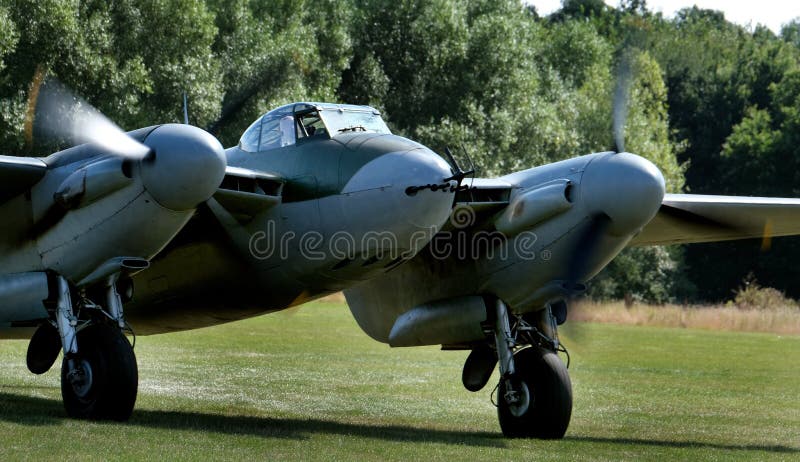
de Havilland Mosquito Night Fighter
The Mosquito stands as a testament to British ingenuity during World War II, emerging as a versatile twin-engine aircraft that transcended its original role as a mid-wing bomber. Crafted with a unique frame of wood and a plywood skin, this exceptional aircraft was meticulously assembled through a combination of gluing and screwing in facilities across England, Canada, and Australia. Conceived in 1938, the Mosquito entered active service in 1941 and underwent remarkable adaptations to become the Allies’ primary night fighter.
In its nocturnal combat role, the Mosquito played a pivotal role in the skies over Germany, where it claimed the destruction of more than 600 Luftwaffe planes. Beyond that, its effectiveness extended to intercepting and neutralizing numerous V-1 missiles, colloquially known as “buzz bombs,” over England and the English Channel. Notably, the aircraft demonstrated its prowess as a bomber by surpassing its designed bomb load capacity.
Boasting a maximum speed exceeding 400 miles (640 km) per hour and an impressive range of over 1,500 miles (2,415 km) with a 4,000-pound (1,816-kg) bomb load, the Mosquito embodied speed, agility, and efficiency. Initially armed with four .303-caliber machine guns and four 20-mm cannons, all firing through the nose, the Mosquito underwent various modifications throughout the war and in subsequent usage by air forces worldwide. The sheer versatility of this aircraft resulted in 42 different “marks” or versions, totalling 7,780 units produced across England, Canada, and Australia.
The Mosquito seamlessly transitioned between roles, serving not only as a bomber and a night fighter but also excelling in high-altitude combat and reconnaissance missions. Its adaptability reached new heights when it was repurposed for a wartime airline connection, flying over enemy territory between Britain and Sweden. The Mosquito’s enduring legacy lies not only in its impressive combat record but also in its ability to evolve and meet the diverse needs of air forces around the globe.




